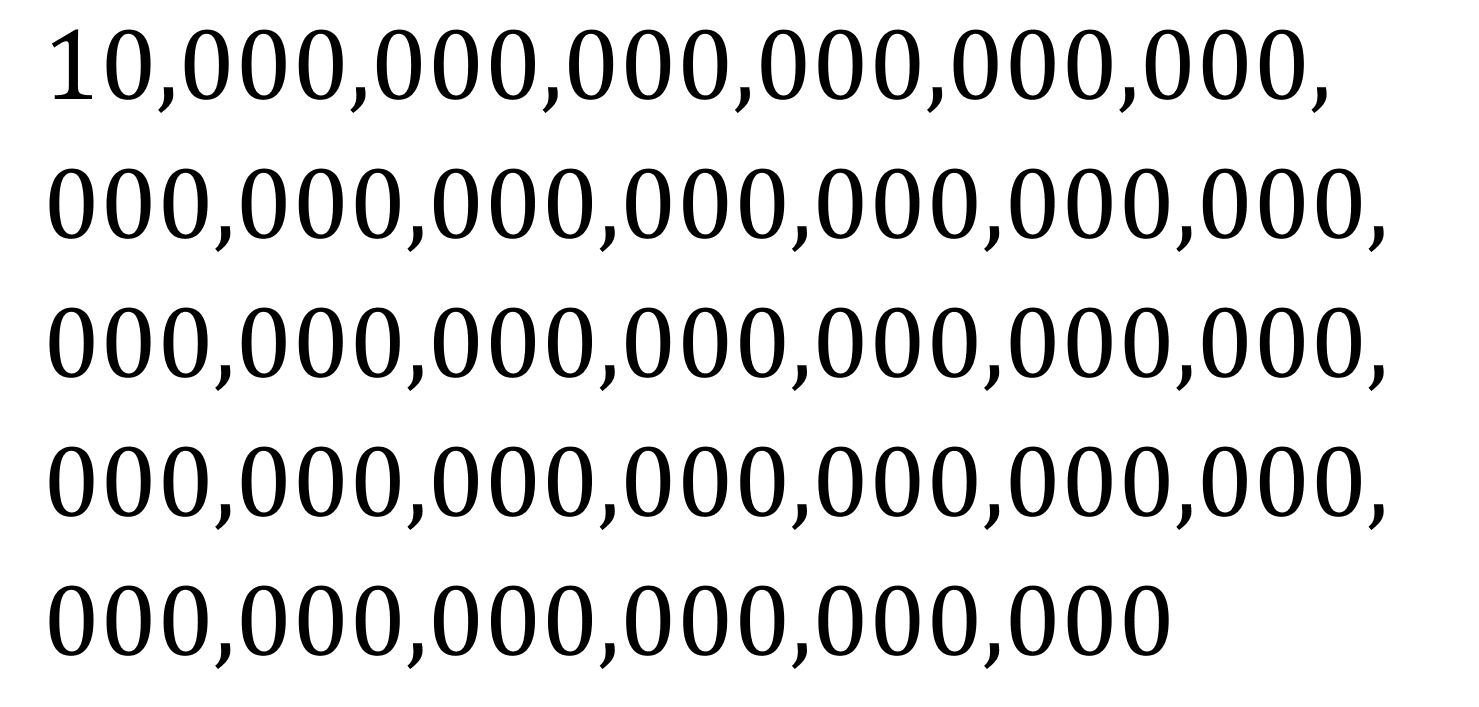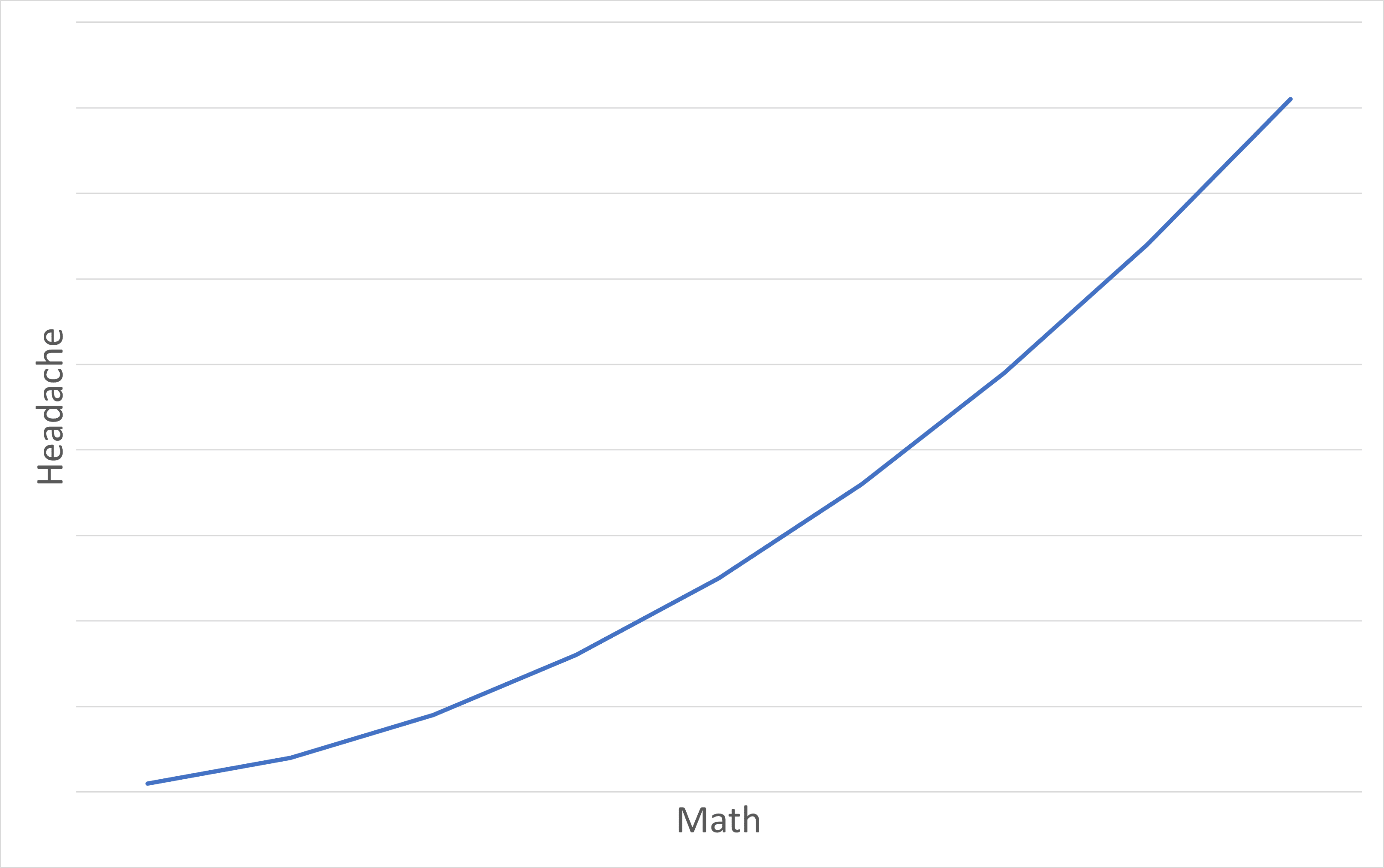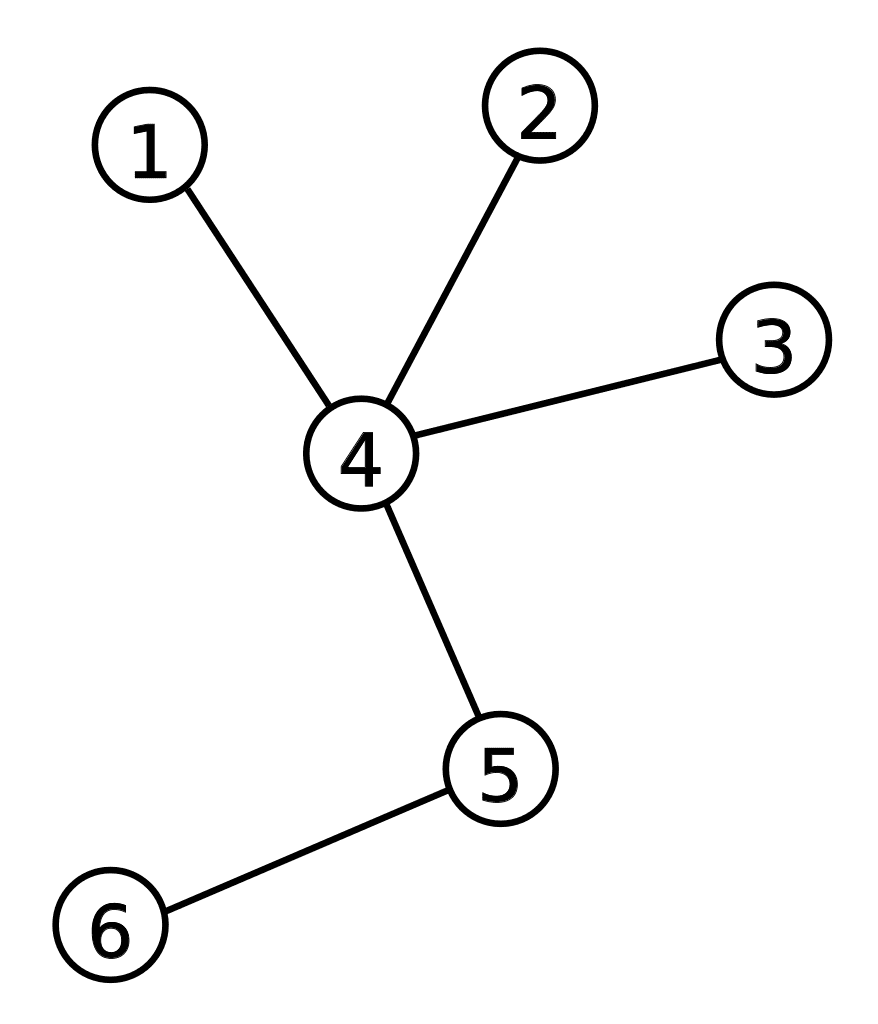Here’s the thing about numbers: they go on for frickin’ ever. Literally. What’s the biggest number you can think of? 700? A million? Whatever’s in Elon Musk’s bank account today? It doesn’t matter – add one to it. Congratulations: you just made an even bigger number. You played yourself.
A corollary of this unfortunate fact is that there are some, frankly, huge numbers out there. Numbers like a googol, which looks like this:

Damn she thicc. Image Credit: IFLScience
That’s one followed by 100 zeroes, or 10100, and it’s bigger – much, much bigger, in fact – than the number of particles in the entire universe. Not molecules, you’ll note; not atoms either; but particles: the electrons, leptons, quarks, and so on that have taken the atom’s place in physics as the elementary building blocks of the universe.
However, to googologists (the nerds who spend their time studying these mind-bogglingly massive numbers) a googol is a tiny thing. No sooner had the term been coined than had one for an even bigger, related number: the googolplex, defined as 10googol, or one followed by a googol zeroes.
Unlike the googol, we’re not going to even try to write out a googolplex in full, because – well, a quick experiment puts the number of zeroes typed by simply holding down the 0 key for ten seconds at about 320. That sounds pretty fast, and indeed if you could somehow rope every human who has ever existed into holding down the zero key for around 72 quinvigintillion years, you might just manage to finish typing it out. Of course, that’s about the length of time between the Big Bang and the point in the distant future at which everything in the universe gets quantum tunneled into a weird melty liquid gloop, which would probably make it a bit difficult to keep the momentum going.
Hopefully we’ve made our point: it’s really, really hard to comprehend how big these kinds of numbers actually are. Here’s the thing: even a googolplex isn’t all that big compared to some of the monsters out there.
The numbers too big to fit in the universe
Theoretically speaking, there are the same number of numbers larger than a googolplex as there are numbers at all. Practically, though, discovering these immense numbers isn’t all that easy – and there aren’t actually many that we even have words for.
Take Skewes’s number, for example. It’s got a name, and a definition from number theory, so you’d think we’d know something about how big it is – and we do. Know something, that is: it’s either somewhere between 1014 and 10316, or it’s more like

Argh. Image Credit: IFLScience.
If you’re thinking that’s quite a big discrepancy, you’re right: the first two estimates can be written out in full in a matter of minutes if that’s the kind of thing you’re into, while the latter is the equivalent of a googolplex raised to the power of 500. As a glimpse at some perspective, raising just two (2) to the power of 500 yields a number as long as the googol above … and then half that same length again. The reason for this is a little thing called the Riemann Hypothesis: the first estimates assume the hypothesis is true, while the other assumes it’s false.
Then there’s Graham’s number. That comes out of combinatorics – specifically, an area now known as Ramsey theory – and it’s so large that it literally doesn’t fit in the universe. Even if we could write it out with one digit per single Planck volume, which is the smallest measurable size anything can possibly be, we’d still run out of room long before we got to the end of the number.
“If you actually tried to picture Graham’s number in your head, then your head would collapse to form a black hole,” said physicist and Numberphile Tony Padilla in one of the YouTube channel’s five videos devoted to the number.
“That’s not just some sort of crazy sort of [metaphor],” he explained. “You couldn’t store that much information in your head… the maximum amount of entropy you can store in your head is related to a black hole the size of your head, and the entropy of a black hole the size of your head carries less information than it would take to write out Graham’s number.”
In fact, not only is Graham’s number so large that its digits can’t be written out within the size of the universe, but neither can the number of those digits, and neither can the number of digits in that number, and so on all the way down, for more levels than the total number of Planck volumes in the observable universe.
All of which means that Graham’s number can’t even be written out as a stack of powers, like we did with Skewes’s number before it. Mathematicians actually had to create a whole new kind of notation to deal with numbers this big, and even in that notation, Graham’s number causes a problem, having to be expressed as the 64th element in a recursive sequence like this:

Simple, right? Good, because things are about to get even gnarlier.
Accidental giants
Like Graham’s number, the next slew of absolutely mahoosive numbers are expressed as elements of a sequence – but with a big conceptual difference.
While the googol and googolplex were invented purely to exist and be large, and Skewes’s and Graham’s numbers turned up as answers to difficult questions in unrelated areas of math, numbers like TREE(3) – the next figure up on our list – or SSCG(3), an even larger number, were found almost incidentally.
“TREE(3) […] absolutely puts Graham’s number to shame,” Padilla said. “I mean, really, Graham’s number is effectively zero compared to TREE(3).”
That’s an odd name, right? In this case, the number isn’t named after the boffin who discovered it, but is wholly descriptive: it’s the third element in the TREE sequence.
To understand what that means, we have to take a dip into an area of math known as graph theory. If you’re not a mathematician, you may think you know what a graph is: it’s one of those charts where you compare two things along a couple of axes. Like this:

As a math PhD I have the data to back this up. Image Credit: IFLScience
However, if you are a mathematician, you probably know graphs look more like this:

Graphs, as graph theorists know them, consist of edges and vertices. That’s the most basic definition, although there are special names for graphs where every vertex is connected to every other vertex (a complete graph), or graphs where pairs of vertices are only connected in one direction and not the other (a directed graph), and things like that.
Trees are one of these cases: a “tree” is defined as a graph in which any two vertices are connected by exactly one edge (because mathematicians are incredibly hilarious and cool, a group of connected trees is called a forest).
Now you know what a tree is, you too can find TREE(3) – you just have to play the game.
“There are three different types of seed,” explains Padilla in the video below. “Mathematicians wouldn’t call these seeds, they’d call them nodes, but we’ll call them seeds.”
From those three starting nodes, the objective is to grow a forest – according to a few rules.
“The first tree can’t have more than one seed,” Padilla says; “the second tree can’t have more than two seeds… and so on, okay? That’s rule number one.”
“The other rule is that if you build a tree [and] find that an earlier tree could have been contained within that tree, the whole forest dies,” he concludes.
So how do you actually play the game of trees? The idea is to work out TREE(n) – that is, the maximum number of trees you can make using n different types of seeds. And at first, it’s pretty unremarkable.
“The first tree has to have one seed at most, right?” Padilla explains. “Can I write down anything else? There’s no way I can… I have to stop now.”
In other words, TREE(1) is one. With a little – we stress a little – extra work, we can find that TREE(2) is equal to three. Neither of those are particularly large numbers. So what should we expect TREE(3) to be?
“TREE(3) [is]… so big that, you know, even just to prove that it’s finite – there just isn’t enough time left in the universe to do that,” Padilla said.
What is the biggest number?
TREE(3) may be so big that – well, that we can’t even say definitively how big it is at all, in fact; we don’t even know how many digits it has. Is it the biggest number we know of?
Ha! Of course not: for starters, we can think of things like TREE(g64) – that is, TREE of Graham’s number. Helpfully, Numberphile has done that for us already:
For a true glimpse at the kind of shenanigans mathematicians can think of when they want to, look no further than Rayo’s number – a figure created purely to win a “who can come up with the biggest number” contest between MIT Professor Agustin Rayo, aka The Mexican Multiplier, and Princeton Professor Adam Elga, aka Dr Evil. None of that is a joke.
“The Mexican Multiplier threw up his hands in victory, smiling, as Dr Evil whispered, ‘I’ve been crushed.’ The battle was finally over,” MIT’s Jan 31, 2007, edition of The Tech regaled its readers.
Towards the end of a tense and fraught battle of wits and dry-erase markers, Rayo seemed to have given up: he walked away, his head hung in shame. Then – a stroke of inspiration. He “furiously scribbled” his now famous number’s definition onto the whiteboard: “The smallest number bigger than any number that can be named by an expression in the language of first order set-theory with less than a googol symbols.”
It was a killing blow. “As Elga collapsed, slain, the referee closed the ceremony,” The Tech recalls.
“’It was a great game,” Elga concluded. “Heated at times, but nevertheless, a really great game.’”
Source Link: These Numbers Are So Big They Literally Don't Fit Inside The Universe